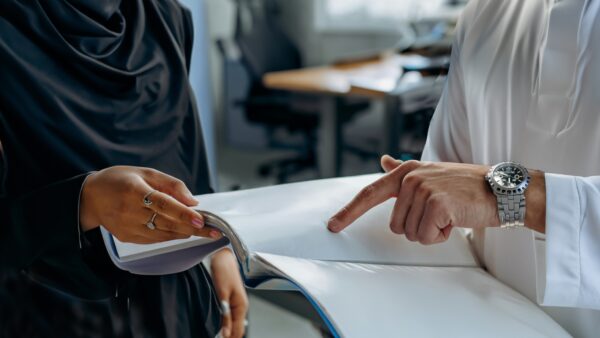The challenge of good teamship
There’s no question about it, good teamship is one of the greatest challenges at work today. You’ll notice I said teamship…and I just made that word up as a parallel to leadership. So if effective leadership is about a single person’s role in influencing and supporting a group to agree upon and then meet a shared goal, then how might we define effective teamship? How about…”the contribution to a team’s achievement of a shared goal through meeting individual objectives combined with consistent support of colleagues to help them meet theirs.”
And therein lies the challenge of teamship – it’s a shared responsibility and we know that in the wrong hands, shared responsibility can lead to a dilution of accountability and in the end, to the team falling short on meeting its objectives. So how can teams meet the challenge of good teamship head on?
Well I’m the strengths guy and I am most certainly going to include strengths in my answer. But it doesn’t end there. This blog is about team development essentials, starting from a position of strength but moving into the development of positive team habits, to support a team through change and challenge.
Good teamship – start from a position of strength
First things first, a team needs to understand its strengths. What it does well, what it’s energised by, how best it can get things done. And whereas understanding strengths for an individual involves pinpointing what drives and motivates that individual and where they have specific qualities that can add value to their role, bringing that concept to a team looks slightly different.
First of all, a team is made up of individuals, each with their own unique strengths. That knowledge is vital in helping a team deliver on its goals because the strengths that one person brings may help support other team members in areas of lack or where they feel drained. So complementary working by drawing on individual strengths can help drive strong teamship.
Secondly, teams need to understand how their strengths work collectively. What I mean is that, in Strengthscope terms, if a team is highly relational but is less energised by execution, you may see patterns of debate, discussion, articulations of support and connection. But this may not translate into action, to getting things done, to delivering on the end goal. Without going through a team awareness process around strengths, this can represent a major blind spot for teams. But once a team knows how it is most, and least, energised, it can use this knowledge to meet its challenges and goals.
So that’s the first point – and I’ve covered this very lightly, there is much much more to it – a team needs to know its strengths, and risks, both individually and collectively if it is to achieve effective teamship. I would see this as a basic minimum for good teamworking, so the earlier in its life a team accesses this level of strengths awareness, the better.
Which brings me on to my second point…
Make sure you develop positive team habits
Alongside knowing and understand your individual and collective strengths as a team, good teamship also involves the development of positive, productive patterns of behaviour. Or habits. And for me, there are five key habit areas it needs to develop for a team to get to a place of effectiveness, with the potential for sustainable high performance:
- Clarity of aspiration
- Utilisation of strengths insights
- Following process
- Becoming agile
- Continuously learning and improving
Let’s go through each of these areas in more detail so I can explain better.
Habit area 1: Be clear on team aspirations to get clarity for everyone
To be an effective team, you need to understand your reason for being. All too often, we meet teams who are little more than a collection of heads of, or whose purpose and objectives have not been discussed or agreed. Or at least not discussed and agreed recently.
This is an essential habit area for teams. Make sure that the team’s purpose is clear, meaningful and understood by everyone. That team goals are also fully understood and can be measured. And that everyone in the team knows how they will contribute personally in order to meet those goals.
Without this, a team will likely stutter and false-start repeatedly as team members head off on individual agendas as they haven’t all bought into an overarching goal or purpose.
Habit area 2: Gain awareness of each other’s strengths and risks to build trust
This second area really relates to acting on the awareness that a team has gained around individual strengths and risks. So rather than just keeping this as an ‘awareness’ exercise, to develop trust, team members should be prepared to ask for help in areas that drain them, or where they just need help. Being prepared to share vulnerability is one of the quickest ways of building trust. And building trust is a fundamental component of team performance.
In addition, knowing who you can go to for what in terms of strengths, skills and knowledge is really important. So sharing that information, making it available to the whole team and then acting on it, is great for trust-building.
The final part of this developmental stage and habit area is actively building psychological safety. I podcast on this at Season 12, episode 6 – ‘What is psychological safety and how can you get it’ so scoot over to the Strengthscope website’s resources section to look it up. An important building block of psychological safety is allowing people to have voice and feel listened to in meetings, even if they are sharing minority or controversial views. This will also pave the way for a high performing team as it’s inviting diversity of thought.
Habit area 3: Take action and follow process to ensure accountability
The third habit area moves the team from ‘nice’ (that is everyone being super nice and friendly to each other) into the potentially uncomfortable territory of calling out poor performance or non-delivery when it happens. This is the only way to effective teamship.
Team members need to be accountable for the delivery of their allocated tasks and other team members should feel empowered to call it out if this isn’t happening, ideally with an open conversation about the reasons for non-delivery and how their colleague can be supported to meet their responsibilities. Honest and open feedback is a hallmark of a team moving towards high performance.
When this habit area is working well, team members typically report feeling confident that their colleagues will implement agreed decisions even if the view in the team wasn’t unanimous when it was discussed.
Habit area 4: Develop agility to become change-ready
Dealing with change and uncertainty feels pretty standard these days but in a team context, there are some specific behaviours that the team can develop and nurture that will help them weather any change storm. Developing a solution-focus rather than a problem-focus is one of them…so not just flagging where issues have come up but going further and suggesting ways that the team could deal with the problem.
Secondly, actively scanning the environment for changes that might come up will help the team stay agile and responsive to any threats.
Finally, supporting anyone in the team who isn’t getting on board with the changes because they don’t understand the need, or feel underconfident that they can get there, or maybe even who just don’t like change and react negatively to it. This is an important part of teamship – to spot this happening for your colleagues and to support that person until they feel sure, strong and capable enough to take on the change that the team needs.
Habit area 5: Move to continuous improvement by stretching the team
The final area of team development that can support long-lasting effective teamship is the stretch towards ongoing learning and continuous improvement. Sharing successes and the learning the team has gained from those successes is an important part of this process, so setting up lessons learned forums for a project or team success is a method for doing this well. Of course, this can also be a useful approach to post-mortem things that haven’t gone so well in the team.
Seeking feedback from each other and from customers and other stakeholders helps create resilience within the team through developing a growth mindset, where the team is prepared to take risks because everything is seen as an opportunity to learn and become stronger. Again, seeking and acting on feedback, as well as being prepared to give it, are the key actions to take in building this habit area.
In conclusion – strengths x habits = great teamship
Understand your strengths and risks individually and collectively as a team and build the positive team habits that I’ve mentioned and you’ll be very close to effective teamship. But know that these are areas that are often missed or forgotten by teams as they grow and develop. If you’d like to know more about how we do this at Strengthscope, and specifically how our StrengthscopeTeam tool works to help teams in all these areas, point your browser to Strengthscope.com and check out the StrengthscopeTeam page. Till next time, stay strong.












